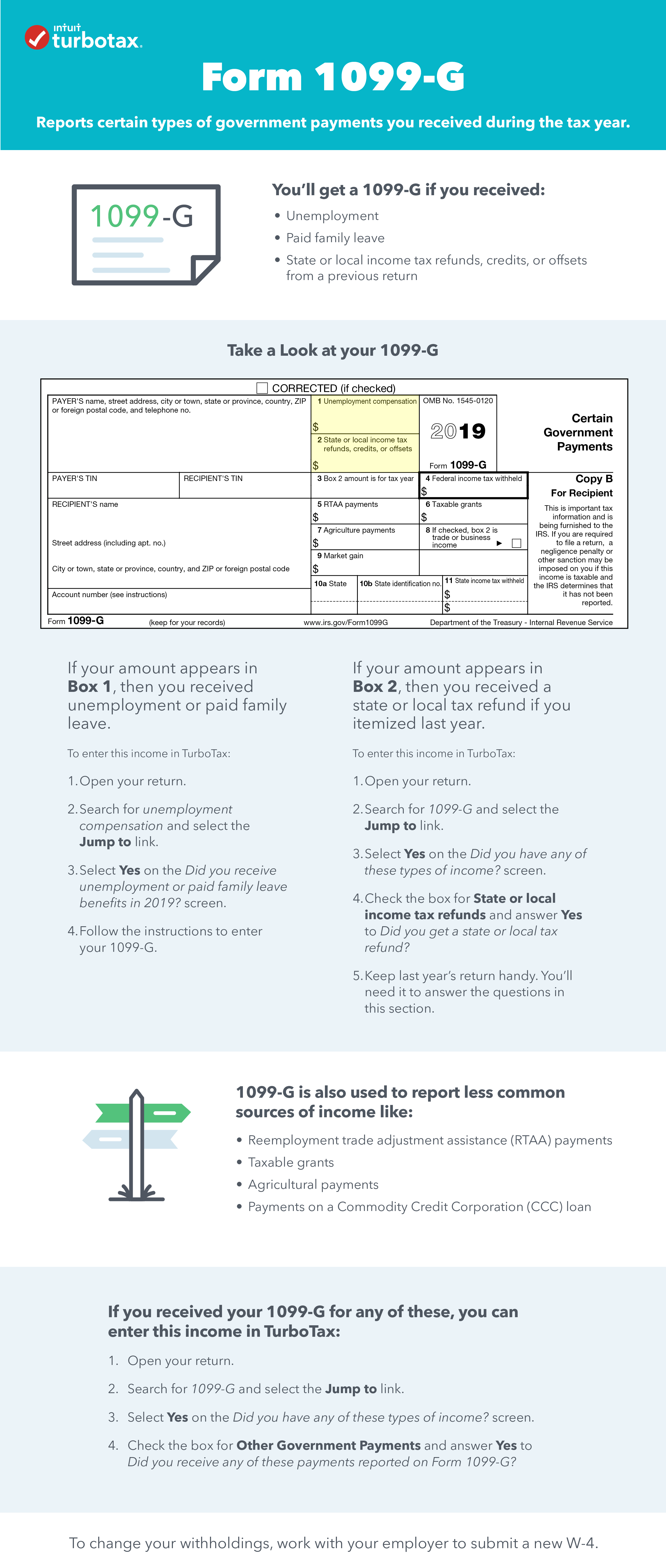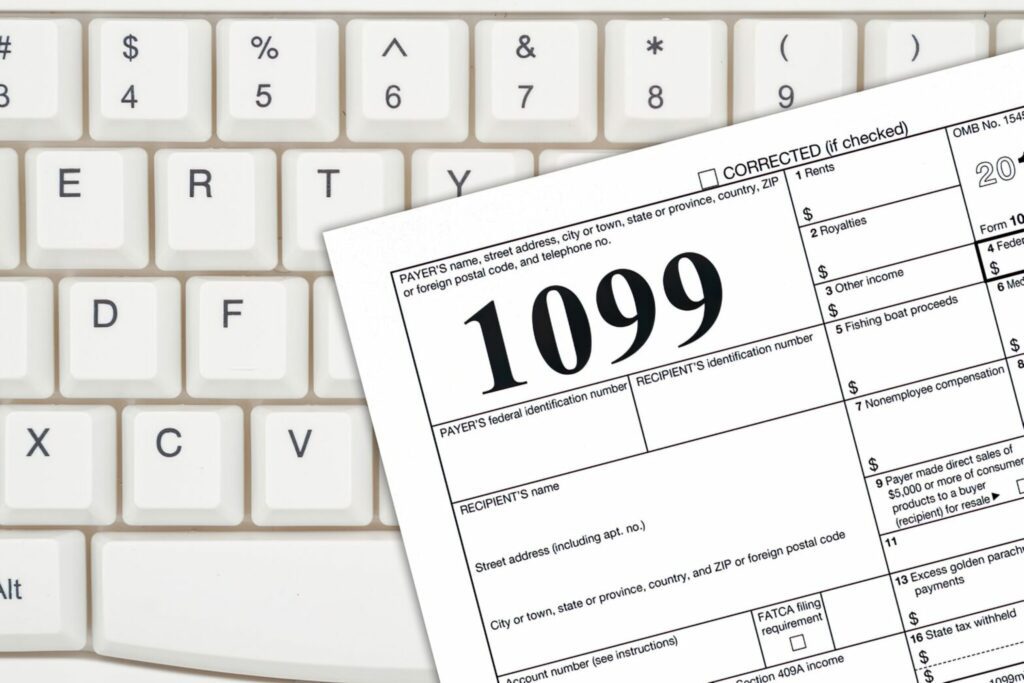In the world of taxation, understanding forms like the 1099-G is crucial for anyone who received unemployment compensation. This form plays a significant role in reporting certain payments received from government entities, including unemployment benefits. If you're navigating the complexities of taxes after receiving unemployment benefits, this guide will serve as a valuable resource.
The 1099-G form is not just another piece of paperwork; it's a critical document for ensuring accurate tax reporting. It details payments such as unemployment compensation, state or local income tax refunds, and other government payments that must be reported to the IRS. Whether you're an individual taxpayer or a business owner, being well-versed in the intricacies of the 1099-G form is essential.
With the right knowledge and preparation, you can confidently manage your tax obligations and avoid potential penalties. This article will explore everything you need to know about the 1099-G unemployment form, including its purpose, how to file it correctly, and what to do if you encounter discrepancies. Let's dive in.
Read also:Telegram Wasmo Cusub 2020 Exploring The Phenomenon
Table of Contents
- What is Form 1099-G?
- Types of Payments Reported on 1099-G
- Unemployment Compensation and 1099-G
- When and How to Receive Form 1099-G
- How to File Your 1099-G
- Common Mistakes to Avoid
- Tax Tips for Unemployment Benefits
- IRS Guidance and Resources
- Handling Discrepancies in Your 1099-G
- Conclusion
What is Form 1099-G?
Form 1099-G is an IRS document used to report certain payments made by government entities to individuals or businesses. These payments include unemployment compensation, state or local income tax refunds, and other government-related payments. The form is essential for taxpayers because it provides the information needed to accurately report these payments on your federal tax return.
For many individuals, the most relevant section of the 1099-G form pertains to unemployment compensation. This section details the total amount of unemployment benefits received during the tax year, which must be included in your gross income when filing your taxes.
The IRS requires government agencies to issue Form 1099-G to recipients by January 31st of each year. This deadline ensures that taxpayers have the necessary information to prepare and submit their tax returns by the April 15th deadline.
Types of Payments Reported on 1099-G
Unemployment Benefits
One of the primary uses of Form 1099-G is to report unemployment compensation. If you received unemployment benefits during the tax year, the amount will be listed in Box 1 of the form. This box specifies the total amount of unemployment benefits you received, which is considered taxable income.
State or Local Tax Refunds
Another common payment reported on the 1099-G form is state or local income tax refunds. If you received a refund from your state or local government, it may need to be included in your gross income, depending on your specific tax situation. This information is typically found in Box 2 of the form.
Other Government Payments
In addition to unemployment benefits and tax refunds, the 1099-G form can also report other types of government payments. These may include agricultural payments, crop insurance proceeds, and certain disaster relief payments. Each type of payment is reported in a designated box on the form, making it easier for taxpayers to identify and report the correct amounts.
Read also:John David Washington Wife Discovering The Life Love And Legacy
Unemployment Compensation and 1099-G
Unemployment compensation is a critical aspect of the 1099-G form, especially for those who received benefits during the tax year. These benefits are considered taxable income by the IRS, and failure to report them accurately can result in penalties or audits.
When you receive unemployment benefits, the issuing agency will send you a 1099-G form by January 31st of the following year. This form will detail the total amount of benefits you received, which must be reported on your federal tax return. It's important to note that unemployment benefits are subject to federal income tax, but they may not be subject to state income tax, depending on your location.
For taxpayers who received unemployment benefits, it's crucial to keep accurate records of all payments received throughout the year. This will help ensure that the information reported on your 1099-G form matches your personal records, reducing the risk of discrepancies or errors.
When and How to Receive Form 1099-G
Timely Delivery
By law, government agencies are required to issue Form 1099-G to recipients by January 31st of each year. This deadline ensures that taxpayers have sufficient time to gather all necessary documents before the April 15th tax filing deadline. If you haven't received your 1099-G form by the end of January, it's important to contact the issuing agency to request a copy.
Electronic Delivery
In recent years, many government agencies have transitioned to electronic delivery of tax forms, including the 1099-G. If you opted for electronic delivery, you can access your form online through the agency's secure portal. This method offers convenience and ensures that you receive your form promptly.
Missing Forms
If you believe you should have received a 1099-G form but haven't, don't panic. You can still file your taxes without the form by using your personal records of unemployment benefits or other government payments. However, it's always best to obtain a copy of the official form to ensure accuracy and avoid potential issues with the IRS.
How to File Your 1099-G
Using Tax Software
Many taxpayers use tax preparation software to file their taxes, which simplifies the process of entering information from the 1099-G form. Most software programs will guide you through the steps of inputting the necessary data and ensuring that it's correctly reported on your tax return.
Filing Manually
If you prefer to file your taxes manually, you'll need to include the information from your 1099-G form on the appropriate lines of your federal tax return. For unemployment compensation, this typically involves reporting the amount on Form 1040, Schedule 1. Be sure to double-check your calculations and ensure that all information matches the data provided on your 1099-G form.
Seeking Professional Assistance
If you're unsure how to file your 1099-G or have a complex tax situation, it may be beneficial to consult a tax professional. They can help ensure that all information is reported accurately and assist with any questions or concerns you may have.
Common Mistakes to Avoid
When dealing with Form 1099-G, it's important to be aware of common mistakes that could lead to errors or penalties. Some of the most frequent issues include:
- Forgetting to report unemployment compensation as taxable income.
- Incorrectly entering data from the 1099-G form on your tax return.
- Failing to reconcile discrepancies between your personal records and the information on the form.
- Not reporting state or local tax refunds if they exceed the amount of tax you paid.
By staying vigilant and double-checking your work, you can avoid these common pitfalls and ensure a smooth tax filing process.
Tax Tips for Unemployment Benefits
Withholding Taxes
One way to simplify your tax obligations when receiving unemployment benefits is to have federal income tax withheld from your payments. This can be done by completing Form W-4V and submitting it to the agency issuing your benefits. By withholding taxes upfront, you can avoid a large tax bill when filing your return.
Estimating Tax Payments
If you choose not to have taxes withheld from your unemployment benefits, it's important to estimate your tax liability and make quarterly estimated tax payments. This will help you avoid penalties for underpayment and ensure that you're meeting your tax obligations throughout the year.
Seeking Tax Credits
Depending on your income level and other factors, you may qualify for tax credits that can offset the cost of unemployment benefits. For example, the Earned Income Tax Credit (EITC) is available to low- to moderate-income taxpayers and could reduce your tax liability or provide a refund.
IRS Guidance and Resources
The IRS provides a wealth of resources to help taxpayers navigate the complexities of Form 1099-G and unemployment benefits. Some useful resources include:
These resources offer detailed explanations of the 1099-G form, unemployment benefits, and related tax topics, helping you make informed decisions about your tax filings.
Handling Discrepancies in Your 1099-G
If you notice discrepancies between the information on your 1099-G form and your personal records, it's important to address the issue promptly. Start by contacting the issuing agency to request a corrected form. Be prepared to provide documentation supporting your claim, such as pay stubs or benefit statements.
If the issue cannot be resolved with the issuing agency, you may need to file an amended tax return using Form 1040-X. This form allows you to correct errors or discrepancies on your original tax return, ensuring that all information is accurate and up-to-date.
Remember, addressing discrepancies early can save you time and hassle in the long run and help prevent potential penalties or audits.
Conclusion
In conclusion, understanding Form 1099-G and its role in reporting unemployment compensation is essential for accurate tax filing. By following the guidelines outlined in this article, you can ensure that your tax obligations are met and avoid common pitfalls that could lead to errors or penalties.
We encourage you to take action by reviewing your 1099-G form carefully, consulting IRS resources, and seeking professional assistance if needed. Don't forget to share this article with others who may benefit from the information and explore additional resources on our site for more tax-related insights.


